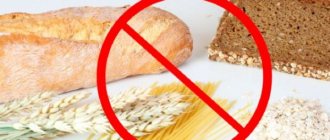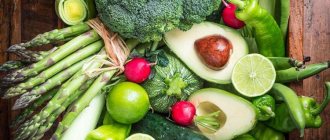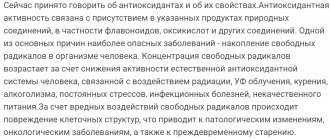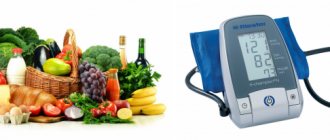Gluten is a complex protein found in grain crops: wheat, barley, rye. It gives the dough softness, elasticity, makes it airy and fluffy, which is why bakery product manufacturers love it so much. It is also found in soft cheeses, sauces, and oils. Over the past 2 years, the media and forums on the Internet have been actively promoting a gluten-free diet.
Increasingly, product packaging is labeled “Gluten Free.” Typically, such products are very different in price from similar ones that are not marked. But is it worth paying extra for this inscription? This element is indeed contraindicated for some people, but how many are there really and why is it not always rational to give up cereal protein? Read our article and we will tell you the benefits and harms of gluten, explain where it is, what products it is found in, and provide a complete list of foods that contain it.
Our additional services: Bioimpedance | Marutaka Massage | Pressotherapy | Ion-Detox
What is gluten?
Gluten is an organic complex protein. This element is a component of many plants of the cereal family. Thanks to its ability to retain carbon dioxide produced by yeast, it provides the dough with a rise. This quality of gluten has provided it with a wide range of applications in the production of various products. It not only adds tenderness to the structure of the product, but also adds a pleasant aroma and taste, and extends shelf life.
Gluten intolerance
Unfortunately, not every human body is able to perceive this natural element without negative consequences. In case of individual disorders of the digestive functions of the intestine, gluten intolerance is formed. Its penetration into the body causes the destruction of the villi covering the walls of the small intestine. These negative processes are caused not only by gluten, but also by its analogues: avenin, hordein, etc. Due to damage to the villi, the absorption of nutrients is disrupted, the general condition worsens, and disruptions in the functioning of the stomach occur. Doctors call gluten intolerance celiac disease or celiac enteropathy. Patients need to know the rules of nutrition for this disorder and adhere to a gluten-free diet. This will allow you to completely get rid of negative feelings and symptoms.
Gluten allergy or celiac disease: how to distinguish
These two violations should not be combined. Gluten allergy and celiac disease are classified as food intolerances, but are actually different diseases.
Allergy to gluten occurs more often in children with atopic dermatitis, less often in patients with disorders of the digestive or respiratory system. The disease is curable: the main therapy is a gluten-free diet with temporary adherence.
In adults, allergies can be caused by increased concentrations of gluten from cereals in the diet. The treatment process takes a long period, sometimes up to several years. The method involves eliminating gluten temporarily and then reintroducing it. Thus, the body's reaction to this component is checked.
Read also: Liver cleansing at home
Gluten-free products - complete list
What foods may contain gluten?
Gluten is widely used in production:
- bakery products and pastries of various types;
- pasta;
- all types of sausages;
- confectionery products;
- semi-finished products - dumplings, cabbage rolls, dumplings, meatballs, etc.;
- milk curds and yoghurts, condensed milk, ice cream, infant formula;
- broths in powders and cubes;
- industrial soups;
- French fries;
- canned fish and meat;
- soy products;
- all types of baked goods;
- sauce, mayonnaise and ketchup;
- mineral and vitamin supplements.
Amaranth
Amaranth has a rich history, for example, it was a staple food for the Inca, Mayan and Aztec civilizations. Moreover, it is a highly nutritious grain with impressive health benefits.
Amaranth is also considered a “pseudo-cereal” because it is a herbaceous plant, but its seeds are often called grains.
They contain large amounts of calcium, as well as magnesium, manganese, phosphorus, potassium and vitamin C. Amaranth also meets 29% of the daily iron requirement. Its protein content is 13-14%, which is higher than most other cereals.
Some studies suggest that amaranth may reduce inflammation and reduce some risk factors for cardiovascular disease.
One cup (246 grams) of cooked amaranth contains 5 grams of fiber and 9 grams of protein.
Use: salads, baked goods, cereals, soups.
You can use amaranth as a substitute for other grains such as rice or couscous. Amaranth that has been cooked and then cooled can also be used in place of cornstarch as a thickener for soups, jellies, or sauces.
What foods do not contain gluten?
If you have celiac disease, you can include in your diet:
- natural milk and products made from it;
- eggs;
- mushrooms, berries, fruits and vegetables;
- fresh fish and meat without marinades and seasonings;
- all types of legumes;
- nuts, seeds;
- buckwheat, millet groats, rice;
- dried fruits;
- compote, juice, tea, natural coffee;
- honey.
Gluten free diet for weight loss
Recently, show business stars are simply obsessed with the newfangled gluten-free diet, which helps to lose weight. There are even admiring reviews from celebrities showing off their curves. A gluten-free diet involves limiting foods containing gluten, and more restrictive types of diets completely exclude such foods. Among doctors there are also supporters and opponents of such nutrition.
Undoubtedly, a gluten-free diet has certain advantages:
- reduces the amount of high-calorie foods in the diet - foods with gluten contain many calories;
- increases the amount of vegetables in the diet - vegetables are loaded with vitamins and other beneficial components, and are also a source of healthy fiber;
- contributes to the health of the human body.
Opponents of the gluten-free diet criticize this approach to nutrition. In their opinion, products containing gluten provide the human body with important components, so they should not be completely excluded from the diet. In addition, the quality of food is also important. If it is natural, then the gluten content in it will not harm your health. If, in addition to gluten, it contains preservatives and dyes, it should not be eaten.
On a note!
According to scientists, many manufacturers include flavors, sugar, fat and other substances in their products to compensate for the lack of gluten. In fact, such products, although gluten-free, pose a greater danger to the human body than foods containing gluten, and contribute to the accumulation of fat deposits. READ OTHER INTERESTING ARTICLES ON THE TOPIC
- Why take Omega-3?
- What is gluten?
- Gluten Free Products
Brands and manufacturers of gluten-free products
There are several large manufacturers in the world whose specialization is the production of gluten-free products. These include:
- Nutri Free (Italy) – bread, pasta, bread and muffin mixes, stuffed corn waffles, pretzels, biscuits, sandwiches, cereals, etc.;
- Shar (Italy) – baking flour, bread, buns, mini-baguettes, muffins, cookies, waffles, pasta, crackers, breakfasts, etc.;
- Gullon (Spain) – a large assortment of gluten-free cookies;
- Provena (Finland) – cereals, porridges, flour, etc.;
- McMaster – baking mixes, confectionery, large selection of pasta;
- Sam Mills - various types of pasta;
How can you tell if foods are gluten-free?
Food manufacturers are required to include information about gluten content or its absence in product labeling. Today we can choose safe Russian gluten-free products . They have an icon that says “gluten free” or a crossed out ear icon. When purchasing imported gluten-free products, patients with celiac disease should be guided by the inscription Gluten free products, indicating the absence of the element. If products are labeled as may contain traces of gluten, they may contain small amounts of gluten. Such products should be avoided. It should be noted that gluten-free products are quite easy to find in Moscow.
Gluten-free food list
Congenital intolerance to foods containing gluten - celiac disease - brings a lot of trouble to people suffering from it. Even a small amount of pure gluten accidentally introduced into the diet can cause inflammation in the small intestine. But gluten is used in the production of a wide variety of products consumed by humans, and is extremely in demand in the cuisine of vegans and vegetarians. And yet, a list of gluten-free products exists and makes it possible to create a specialized diet.
If a product is labeled “gluten-free,” it means it does not contain gluten.
Cereals and porridges
Not all grains contain protein, which some people have difficulty digesting. To prepare porridges, you can use gluten-free cereals from the following list:
- buckwheat;
- corn;
- rice;
- sorghum.
It is allowed to include legumes in a gluten-free diet - peas, soybeans, lentils.
Regarding oats, you can often find opposite opinions - both that they do not contain gluten, and that they are prohibited products for celiac disease. It may seem surprising, but both theses are true. As a Canadian study showed, there is indeed no gluten in oats, but there is another protein - avenin, which is related to gluten. For this reason, oats can cause individual intolerance.
For products such as oatmeal cookies or instant cereal, these products contain both avenin and gluten. The latter appears due to the peculiarities of production, when wheat, rye or barley components enter the final product.
Warnings that the product contains traces of gluten can be found on packages even with safe cereals and legumes.
Pasta
For many people, pasta is an integral part of their diet, so switching to a gluten-free diet can be quite stressful. Manufacturers producing gluten-free products have found a solution to this problem that will benefit consumers. For example, gluten-free pasta from MAKFA is made from corn and rice flour.
Fusilli brand pasta made from rice and two types of corn flour (white and yellow) is also gluten-free. This Italian product (pasta) comes in different types:
- spirals;
- feathers
- spaghetti.
Information on the pasta of these brands guarantees the safety of consumption of these products by people with celiac disease.
Gluten-free pasta series “Makfa”
Cookie
Gluten-free cookies are made from several types of flour - corn, rice, oatmeal. Quite often, gluten-free cookies are simultaneously a dietary product for those who are lactose intolerant - milk sugar, and for diabetics. All these nuances are usually indicated on the packaging of specific products.
You can not only buy gluten-free cookies (trademarks Bebi, Gullon, Honey Stinger) but also prepare them yourself. This benefit would be a good addition to a gluten-free diet indicated for celiac disease.
Bread
Many food companies produce gluten-free bread - “Dr. Kerner", "Sugaroff", "Healthy" and others. Bread can be purchased:
- rice with vitamins;
- Crispy Corn Rice Caramel;
- rice with dark chocolate;
- buckwheat with dietary vitamins;
- rice and corn without gluten and lactose;
- amaranth with Jerusalem artichoke and others.
If a child or adult has diabetes or lactase deficiency, this does not necessarily mean that they need to eat gluten-free foods. Only a doctor can give such a recommendation based on laboratory blood tests.
Healthy bread
Soy sauce
In the recipes of many soy sauces, gluten is present as a food additive - a thickener. Gluten-free soy sauce, like most gluten-free products, costs significantly more (about 6-7 times). The production of such products is carried out by The New Primal, Brianna X, Kikkoman and others.
Sweets
The “Gluten Free” mark can also be seen on children’s favorite sweets – candies and marshmallows. It can be:
- pastille “Apple” from Pasti Food;
- citrus candy from Candy Tree;
- Apple-Blueberry candies from Bob Snail;
- marshmallows from Smart Sweets;
- apple marmalade from “Sweet World” and other products.
When selecting sweet delicacies, you should pay attention to other characteristics. Many of these products are made without added sugar or lactose, which makes them suitable for use in the diet of people with diabetes or lactose intolerance.
Baby food
It is not always possible to diagnose celiac disease in a young child in a timely manner, since the symptoms of celiac enteropathy usually create a false clinical picture. Symptomatically, celiac disease is similar to iron deficiency anemia, rickets, and anorexia. Children exhibit:
- chronic diarrhea;
- delayed physical development;
- poor appetite;
- capriciousness.
Signs of celiac disease
Typically, symptoms appear by 9-18 months, that is, by the time when, in addition to breastfeeding, complementary foods are actively included in the children's menu. It has been noticed that in children who are bottle-fed, this disease is detected earlier. In this case, the problem of gluten-free baby food becomes urgent. Baby cereals, purees and other gluten-free products can be chosen from organic baby food brands:
- "Spongebob";
- “Eat Healthy”;
- "Smart Sweets"
The companies producing mixtures are Healthy Times, Heins, Gerber, Spelenok, Agusha, Babushkino Lukoshko and many others. Very popular gluten-free porridges from this list:
- dairy-free oatmeal from Hipp;
- dairy-free Remedia;
- dairy-free corn with prebiotics from Fleur Alpine;
- milk oatmeal with banana FrutoNyanya;
- milk rice with apple from Nestle;
- milk buckwheat Bebi.
When choosing gluten-free cereals for your baby, it is worth discussing the advisability of using them with your pediatrician.
If a child does not have problems digesting gluten, there is no need to strive for specialized nutrition just because it is considered fashionable.
Complications of celiac disease
It is important to promptly identify gluten intolerance. Consumption of products containing this element will cause disruption of all metabolic processes and complicate the absorption of important elements. Celiac disease has a number of serious complications affecting various organs and systems. The small intestine performs a vital function during the digestion process. This organ produces enzymes that break down proteins, supplying the body with amino acids, without which vitamins and hormones cannot be synthesized, and new cells cannot be created. Malfunctions in the functioning of the small intestine force the liver, pancreas, and gallbladder to work under increased load, which leads to organ diseases. Diarrhea appears, worsening the condition. The lack of supply of useful elements negatively affects the operation of other systems. With celiac disease, the functions of the spleen, which is responsible for hematopoiesis, are impaired. Articular joints weaken, cartilage tissue is destroyed. Negative processes in the muscles and cramps are observed. The composition of tooth enamel changes, it weakens, opening the way for bacteria. The gums loosen, which can cause periodontal disease, and cases of stomatitis and gingivitis become more frequent. Lack of supply of useful elements and metabolic disorders are expressed by deterioration of the skin condition and the appearance of acne. The overall tone of the body decreases. With celiac disease, fatigue, melancholy, and headaches are observed. Lack of treatment and diet in childhood causes delayed maturation of the genital organs in adolescence. Complete disruption of reproductive function is possible.
Symptoms
First of all, parents of children need to pay attention.
Detection of signs of celiac disease should prompt a visit to the doctor for an accurate diagnosis. This will allow you to exclude foods that worsen the condition from the child’s diet and prevent the development of diseases. Symptoms appear at the beginning of the introduction of complementary foods after eating foods containing gluten. The period of manifestation of negative reactions is individual. In one child they are observed after 1-2 days, in another it takes several weeks before the first symptoms appear, which complicates the problem. The following signs may indicate gluten intolerance:
- frequent attacks of colic, increased gas formation and bloating;
- loose stools of a greenish hue mixed with mucus, foam, and a pungent odor;
- alternating constipation and diarrhea;
- periodic vomiting, regular regurgitation;
- pale skin;
- rash of reddish blisters that cause itching;
- decreased appetite, insufficient weight gain or weight loss;
- drowsiness or excessive activity.
School-age children may experience similar symptoms.
In adolescence, celiac disease sometimes manifests itself with signs that at first glance are not related to this disease:
- underdevelopment of enamel of permanent teeth;
- too short;
- anemia;
- lack of menstruation in girls;
- liver diseases;
- regular headaches;
- back and joint pain that cannot be treated;
- depression, panic attacks, epilepsy;
- diathesis.
Common symptoms of gluten intolerance in adults include:
- abdominal pain, increased gas formation;
- diarrhea with foul-smelling stools that may contain blood;
- attacks of nausea and vomiting;
- alternating diarrhea and constipation;
- pain in the liver area, dysfunction;
- joint pain;
- vitamin deficiency, accompanied by fatigue and drowsiness;
- osteoporosis;
- ulcerative stomatitis;
- mood swings, depression, irritability, insomnia.
Women with celiac disease experience disruptions in the menstrual cycle and may have problems conceiving a child. During pregnancy, there is often a risk of miscarriage. Detection of symptoms of gluten intolerance should prompt a visit to a gastroenterologist, who will prescribe an examination to accurately diagnose the pathology. For this purpose the following is carried out:
- small intestinal biopsy;
- examination of blood tests for the presence of specific type antibodies in it;
- capsule endoscopy technique.
You can try at home to make sure that the symptoms are associated specifically with celiac disease, and are not signs of other malfunctions in the body. Home studies will require 4 weeks. Observations of your own condition should be recorded to ensure accurate diagnosis. During the first half of the period, it is necessary to exclude from the menu all products that contain gluten. For the next two weeks, you should eat as usual. If signs of celiac disease begin to appear, you should contact a gastroenterologist to accurately confirm the diagnosis and switch to a gluten-free diet.
Can it be cured?
Allergic reactions and protein metabolism disorders can be a consequence of celiac disease. The exact cause of this pathology, which causes the negative effects of natural protein on the body, is unknown to science. It is impossible to completely get rid of celiac disease. But it shouldn’t be considered a death sentence. It will not cause any harm if you follow your diet. Eliminating the provocateur of negative reactions prevents the development of negative changes and complications. Eating gluten-free products allows you to completely maintain the normal functioning of systems and organs and not suffer from the symptoms of gluten intolerance. No medications are required for this disorder.
Diet for celiac disease
Many patients, having learned about the diagnosis of celiac disease, believe that now they will have to strictly limit themselves for the rest of their lives, eating monotonous, tasteless food. This is a common misconception. Of course, your diet should not contain foods high in gluten. But this does not mean that the menu will be monotonous and tasteless. The diet of people with individual intolerance to this element contains all the products from which you can prepare tasty, satisfying, varied dishes. They can use meat, poultry and fish, cereals, any vegetables, berries and fruits, dairy products, etc. in the menu. Root vegetables, greens, pumpkin and sunflower seeds, and flax seeds are excellent members of the diet for celiac disease. You need to include black rice and legumes in your menu. Manufacturers of special gluten-free products provide significant assistance to people suffering from celiac disease. The range of these products includes products for the everyday menu: bakery products and pasta. Lovers of confectionery and even sweets can pamper themselves. For housewives who love to bake, brands offer several types of flour that successfully replace the traditional wheat counterpart. Medical experts recommend that patients with gluten intolerance eat a varied diet. This will not only allow you to have fun, but will also ensure a high-quality supply of the required vitamins and minerals, and provide excellent conditions for the functioning of systems and organs. A guideline can be a diet developed by nutritionists.
Knowledge base
In order to properly build a diet and exclude products containing gluten from it, it is worth understanding the characteristics of this element, its dangers and benefits for the human body. Gluten is a collective term that combines a group of proteins. The latter are contained in the seeds of cereal crops and are present in the diet of every person. In the dry state, the substance is a powder, and after contact with water it turns into viscous gluten. The greatest problems when consuming products with such protein are experienced by people with individual intolerance.
Due to its “adhesive” properties, gluten is actively used in the food industry. It is used in the baking of bread, in the production of meat products and various semi-finished products. Thanks to the addition of such protein, products are stored longer, retain their shape and guarantee “airiness” when baking.
A small amount of the substance is not hazardous to health. If you regularly include foods containing gluten in your diet, then the appearance of side effects is not far off. The following problems are possible here:
- gastrointestinal disorder;
- diarrhea;
- stomach pain;
- deterioration in the absorption of vitamins;
- decreased immunity and so on.
Not everyone knows, but the quality of flour depends on the amount of gluten in the composition. Here the pattern is as follows:
- Premium flour contains 30% gluten or more.
- First grade - up to 28%.
- Second grade - 23-25%.
- Pulp flour - 18-20%.
It is easy to determine the gluten content - just knead a little dough and soak it in water until the starch is eliminated. The procedure is carried out until a small piece of sticky substance remains in the hands. The quality of extracted gluten is characterized by the following criteria:
- color;
- level of elasticity and resilience;
- extensibility.
A substance with a light yellow hue is considered high quality. If the finished composition is dark in color, this indicates low quality flour. In addition, good gluten should not stretch more than 15-20 cm.
Sample menu for the week
On Monday
- 1st breakfast: rice casserole, gluten-free bread, tea/natural coffee.
- 2nd breakfast: pumpkin seeds, gluten-free fruit muffin.
- Lunch: rice soup with meat broth, stewed pork, radish salad.
- Dinner: mashed potatoes or vegetable stew with chicken/turkey pancakes, vegetable salad, kefir.
On Tuesday
- 1st breakfast: millet milk porridge with dried fruits, a sandwich of gluten-free bread and boiled chicken breast, tea/natural coffee.
- 2nd breakfast: pear/apple, almonds, tea.
- Lunch: mushroom soup, steamed or grilled fish, tea.
- Dinner: stewed vegetables or baked potatoes, boiled beef, natural yogurt.
On Wednesday
- 1st breakfast: rice milk porridge with pieces of fruit, berries, tea.
- 2nd breakfast: a sandwich of gluten-free bread and salmon, dried apricots.
- Lunch: chicken soup, apples/pears.
- Dinner: casserole with cottage cheese, salad of fruits and grated nuts, juice or tea.
On Thursday
- 1st breakfast: omelet, gluten-free bread, juice.
- 2nd breakfast: pancakes, kefir.
- Lunch: borscht, vegetable stew, fruit juice.
- Dinner: hominy with fish, cucumber and tomato salad, natural yogurt.
On Friday
- 1st breakfast: buckwheat porridge, gluten-free bread, tea/natural coffee.
- 2nd breakfast: cottage cheese casserole.
- Lunch: cheese soup, boiled wings, vegetables.
- Dinner: rice with meatballs, white cabbage salad with carrots and apples, tea.
On Saturday
- 1st breakfast: gluten-free muesli with milk, apple/pear, natural coffee/tea.
- 2nd breakfast: kefir, fruit cake.
- Lunch: cabbage soup with mushrooms, mashed potatoes or stewed vegetables with chops.
- Dinner: potato pancakes or beans with sauce, stewed fish.
On Sunday
- 1st breakfast: boiled or poached eggs, bread and salmon sandwiches, tea/natural coffee.
- 2nd breakfast: cottage cheese, fruit smoothie.
- Lunch: soup with meatballs, vegetable salad, freshly squeezed juice.
- Dinner: buckwheat with turkey fillet, salad, tea.
There are several recommendations for those who must adhere to a gluten-free diet. It is necessary to use separate utensils and equipment that are used in preparing dishes. The use of frying pans and pots in which food containing gluten is prepared creates a risk of gluten contamination. Gluten-free manufacturers have flour in their products that can be used to make delicious desserts. But you cannot cook them at the same time as baking from wheat flour. Ideally, all gluten-free products should be stored separately. This not only eliminates the risk of gluten, but also protects you from the temptation to break your diet.
Gluten-free flour
Gluten-free flour can only be obtained from grains that do not contain gluten. List of gluten-free grains that can be used to make flour:
- buckwheat;
- corn;
- flax-seed;
- coconut;
- chickpeas;
- amaranth;
- almond;
- pumpkin seed;
- sesame;
- rice;
- lentils;
- cedar;
- peanut;
- black cumin.
It is difficult to imagine that the production of flour from exotic plants will acquire an industrial scale. Flour from rare plant seeds is usually used not for baking, but for thickening sauces or adding to basic dough (corn or buckwheat).
Tips for parents
When a child is diagnosed with gluten intolerance, there is no need to fall into despair or imagine terrible pictures of severe complications.
In childhood and adolescence, he will not have any problems if his parents follow certain rules and instill in their son or daughter useful, important skills. With a competent approach to developing a menu and choosing products, the child will not feel deprived, and the mother will not have problems with feeding. The following measures must be taken:
- There is a separate cabinet in the kitchen for gluten-free products;
- in cooking, a separate frying pan, pots, spatula, slotted spoon, ladle, and knife are used, which must be labeled to avoid accidental confusion;
- cutlery and utensils for eating should also be individual;
- a separate board and knife are provided for cutting gluten-free bread;
- when simultaneously preparing dishes from products with and without gluten, hands must be washed after each operation;
- samples are taken first from the children's dish;
- Desserts with and without gluten cannot be baked in the oven at the same time.
Compliance with these rules will prevent gluten from getting into your child’s food and prevent the appearance of negative symptoms.
When placing food in the kitchen, keep in mind that the child should not have access to food containing gluten. It is not uncommon for mothers to receive advice on including foods on the menu from other women whose children also have celiac disease. It should be noted that prohibited food should not be given to a child, even if a friend assures that her baby did not have a negative reaction to it. Firstly, each body perceives products individually. Secondly, a negative reaction may appear later. There is no need to risk your child's health. When choosing foods for your child’s diet, you need to take into account some recommendations from doctors:
- if you have the slightest doubt about safety, it is better to discard the product;
- Only one new product can be introduced into the menu at a time, this will allow you to accurately determine the child’s reaction and the advisability of its further use.
Manufacturers label products as gluten-containing or gluten-free. But not all products have such marks. In addition, caring mothers rightly doubt the integrity of all manufacturers. It is possible to detect gluten at home. For this, regular iodine tincture is used. This drug needs to be dropped onto the product. The chemical reaction of iodine and gluten is accompanied by the appearance of a purple or black stain.
Gluten free bread
Many modern housewives refuse store-bought bread and try to bake homemade bread. To help such women, homemade bread machines are produced - they have been popular on the market for several decades.
Modern bread makers often come with recipes for homemade baked goods, including gluten-free ones. It's worth remembering that gluten-free bread can only be baked with flour made from gluten-free grains. Due to the lack of gluten, such bread will be less fluffy, but heavier and moister.
Wheat, barley and rye do not exist without this substance. This means that bread useful for celiac disease can only be made from corn, rice, buckwheat, oatmeal or sorghum flour.









